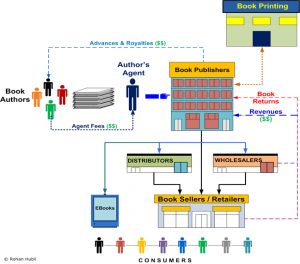It’s easy to forget that guilds once ruled the world. By the time Rembrandt painted his masterpiece “Syndics of the Drapers’ Guild” in 1662, the concept, and inherent intrinsic value of guilds, was already a 400 year-old idea. If you were a craftsman, or merchant, or clothier in the case of Rembrandt’s drapers, guilds offered members and society at large great benefits: ranging from education and apprenticeships to medieval forms of peer review, and all important stamps of approval. Rembrandt’s drapers, you see, were appointed by the Mayor of Amsterdam to oversee the quality of cloth sold in the city. It was a golden era for guilds.
A couple of hundred years later, by the 1800s, human nature, such as political opportunism and rent seeking, ultimately took its toll on guilds. The rise of free market capitalism broke apart former fiefdoms, and rightly so, for guilds had come to hamper innovation and competition.
As the Internet dis-intermediates virtually every industry value chain, the return of the guild is near.
I’m an author of nonfiction books, so let’s take the publishing industry first. At every step in the publishing process, it’s extremely valuable to have a strong peer network. If you want to write a book, the best people to speak with and learn from are experienced authors. Later, established authors can provide important endorsements of your work and, as we all learn at one point or another, one of the best ways to disseminate your new ideas is with the help of other authors. So, it stands to reason that rather than be a lone wolf, which many authors chose to be, a whole new level of learning, network expansion, and generative opportunities open up when you form strong communities with other authors.
At the same time, as the publishing industry tries to sort through the world after the Internet, the basic publishing business model has changed only in fits and starts. The well-researched patterns of resistance to change and innovation in established companies play out in publishing.
Publishers are structured and incentivized for a distribution-centric world, rather than an author or content-centric world. Yet, what has happened — like what happened a few years ago in the music industry — is that the nexus of intrinsic “value” creation within the industry has flipped completely on its head.
Before the Internet, the crucial value-add in both the book and music publishing industry was in distribution. If you were a musician, you needed a record label to make your records, promote your work for radio, and get you into the stores. In publishing, publishers — and only publishers — could get your books out to the world and into thousands of bookstores. They had pricing power with sellers and, well, power all around because they were the central gatekeepers.
That was then:
Not anymore, and not by far: the new value equation is between writer and audience (or band and audience).
You would think that publishers would redouble their efforts to develop strong relationships and value propositions for authors, but this has not happened. All but a few authors I know express dissatisfaction with their publishing experiences. If anything, like movies and music, in the search for hard to find profits, publishing has become more of a hit business.
In music, Live Nation rose up as the new power by forging big deals with top artists ranging from Madonna and U2 to Jay-Z where the money was: concerts. In publishing, especially the nonfiction “ideas marketplace,” as well as other knowledge centric industries, I expect to see something quite different: the rebirth of modern incarnations of guilds.
About six years ago, my friend and fellow author, Ori Brafman and I started organizing dinners for Bay Area authors. It was a simple enough proposition: let’s just have dinner and a glass of wine and exchange ideas about our work, as well as about the people we work with. The dinners were consistently a hit, full of laughter and learning, and out of which collaborations formed.
Then, about three years ago, a member of the group, Jeffrey Pfeffer (above), the noted management theorist and professor at Stanford Business School, asked us: why don’t we form an agency model? It was a good question. Here we were, working hard on our books and articles, and obviously better off collaborating and coordinating our resources.
No one. I repeat: no one was going to do this for us. Again, like many industries, the industry is structured for a different era, with an inverted pyramid, focused predominantly on distribution, with the content makers on the other end. (The same is often true for the speaking market, where nonfiction authors often monetize their work.)
Hence, the re-birth of the guild: we banded together to form a new entity called “The Silicon Guild,” both to coordinate resources, collaborations and tools, as well as to do experiments in the new world of publishing. Everything we do is author focused.
Guilds established to build and strengthen peer ecosystems and collective resources are an obvious response. Software development, long an industry that reveals trends sooner than others, such as the lean software development movement now permeating start-ups and many industries, has also seen a rise in guild-like structures.
Even the venture capital industry, my former home, has begun to experience some of the same disruption and inverted pyramid. In the old days, when capital and networks to venture capital were scarce, entrepreneurs suffered in terms of valuations and value-added services. The VCs sat back and waited for the deals to come to them, and had the bulk of the power. Not anymore. Thanks to the rise of a distributed market for angel funding, such as AngelList, as well as YCombinator, the focus from the earliest stages of venture investing is on the entrepreneur.
No other established firm has capitalized on this shift in power (from investor to entrepreneur) than Andreessen Horowitz as I wrote about in “How Andresseen Horowitz is Disrupting Silicon Valley”. The thesis that Andreessen Horowitz has ridden to become the hottest venture firm in Silicon Valley right now — including raising an astounding $5 billion in capital in just a few years — is similarly (and perhaps surprisingly) simple: Everything we do is entrepreneur focused.
What Andreessen Horowitz is doing, in many ways, is creating an entrepreneur-focused ecosystem. They don’t call it a guild, but that’s essentially how it functions. Just the other day, one entrepreneur supported by A.H. introduced me to another; and, the network effect (and potential value) grows. A.H.’s 80-person team is hugely focused on supporting and serving that ecosystem.
In the music industry, middlemen used to dominate the process of producers reaching consumers (as described in Steve Albini’s recent and rich Guardian piece). At every stage of the process, you needed middlemen: someone to record your music, send out samples, carry your bags, you name it. Today, anyone can record a studio quality album in their own basements. Old lions like EMI who used to hold the keys to every piece of the value chain must settle for nursing its catalogs of IP for what its worth, while settling for low margin distribution deals.
Once again, the artist (not the distributor) is now the center of the value equation, and yet musicians must also find new ways of monetizing their work. Concerts are a primary source of revenue for most artists, and people like John Legend are doing great. Legend makes great revenues on concerts, his music, and branding deals. Beyond the upper echelon, there’s a huge need for creative approaches to audience development (social media helps) and monetization, and we’ve seen a big rise in corporate branding deals.
Monetizing the relationship between artist and audience in many different forms is where the value is. The firms that are building the strongest talent-focused ecosystems in this new world of music, such as The Atom Factory, function much like new guilds.
If the inverted value equation in this new world is so clear, it begs the question: why don’t the established players adapt more quickly or often? To me, it’s simple: incentives. Because the new value equations must be rediscovered, established players are still structured, incentivized, and organized for what was. For example, we have no idea where new pockets of value can be uncovered with The Silicon Guild. We must experiment and invent.
As Alan Kay, the noted technologist says, “The best way to predict the future is to invent it.” If only Rembrandt could be alive to paint it.
This article originally appeared at Medium - Silicon Guild and Peter's blog HERE
Article Featured image: Rembrandt — De Staalmeesters — The Syndics of the Clothmaker’s Guild via Wikimedia commons
Peter Sims is a best-selling author, the co-founder & President of The Silicon Guild, and the founder of BLK SHP (“black sheep”). His latest book is Little Bets: How Breakthrough Ideas Emerge from Small Discoveries, which grew out of a long collaboration with faculty at Stanford’s Institute of Design (the d.school), as well as his previous work in venture capital. He was also the coauthor with Bill George of the best-seller True North: Discover Your Authentic Leadership, a member of General Electric’s Innovation Advisory Panel, an Innosight Fellow, and the co-founder of Fuse Corps, a social venture that places entrepreneurial leaders on year-long grassroots projects with mayors to tackle some of America’s most pressing problems, and is Chair of the Advisory Board.












